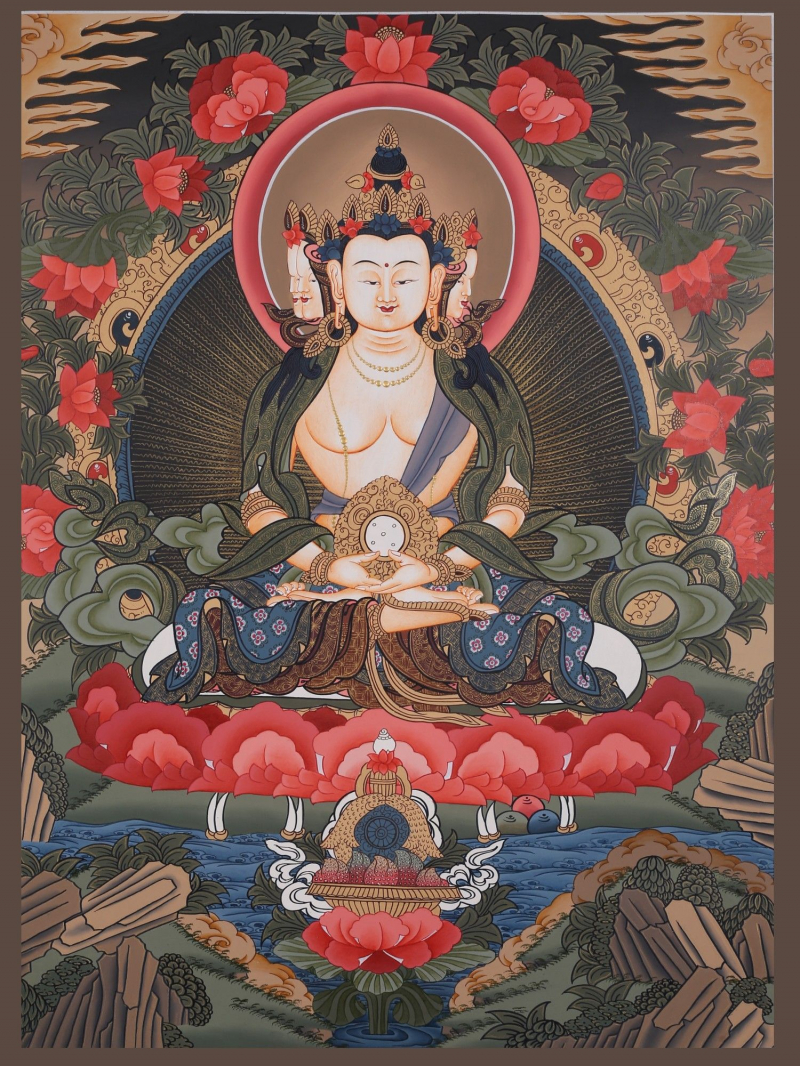Vairochana

Vairochana, one of the primordial Buddhas, is Gautama's first manifestation and embodies the supreme illumination of wisdom. He is thought to be a universal Buddha from whom all others emanate. Voirachana, as the Primordial Buddha, appears in several Buddhist texts as one of the most revered versions of Gautama and is thought to be the direct embodiment of the historical Siddhartha himself.
Vairochana (Sanskrit: "Illuminator"), also known as Mahavairochana ("Great Illuminator"), is considered the supreme Buddha by many Mahayana Buddhists in East Asia, including Tibet, Nepal, and Java. Vairochana, or Mahavairochana, is regarded by some Buddhists as a separate being from the five "self-born" Dhyani Buddhas, one of whom is known as Vairochana.
Vairochana is the primary object of worship among Japan's Shingon sect and is revered as the source of the entire universe. In Japanese, he is known as Dainichi Nyorai ("Great Sun Buddha") or Roshana; in Chinese, he is known as Piluzhena; and in Tibetan, he is known as Rnam-par-snang-mdzad or Rnam-snang ("Maker of Brilliant Light").
When depicted as one of the "self-born" Buddhas, as he is in Nepali, Tibetan, and Javanese art, Vairochana takes the throne and is frequently regarded as the progenitor of the other four Dhyani Buddhas or the Adi Buddha himself. Vairochana is depicted in paintings with his hands in the dharmachakramudra ("teaching gesture"). Vairochana statues depict him sitting in the lotus position in deep meditation. Noble materials, such as gold or marble, are frequently used to represent him.
Vajradhatvishvari, or Tara, is Vairochana's consort; his family is Moha; his mount is the dragon (or lion); his symbol is the chakra ("wheel"); his skandha ("personality component); his rupa ("matter"); his syllable is an or om; his element is space; his sense perception is hearing; his sense organ is the ear; and his location in the human body is the head.










